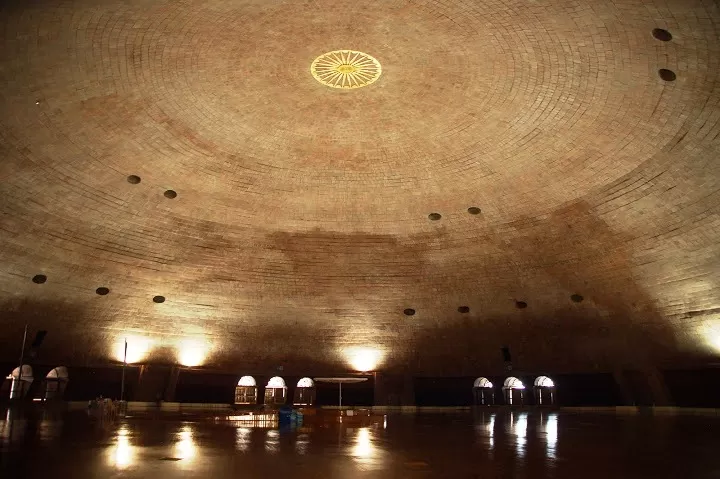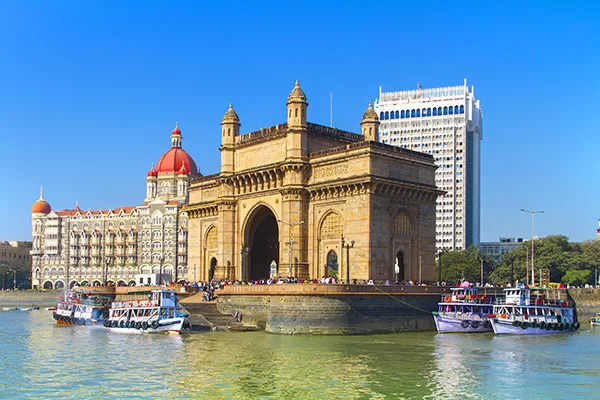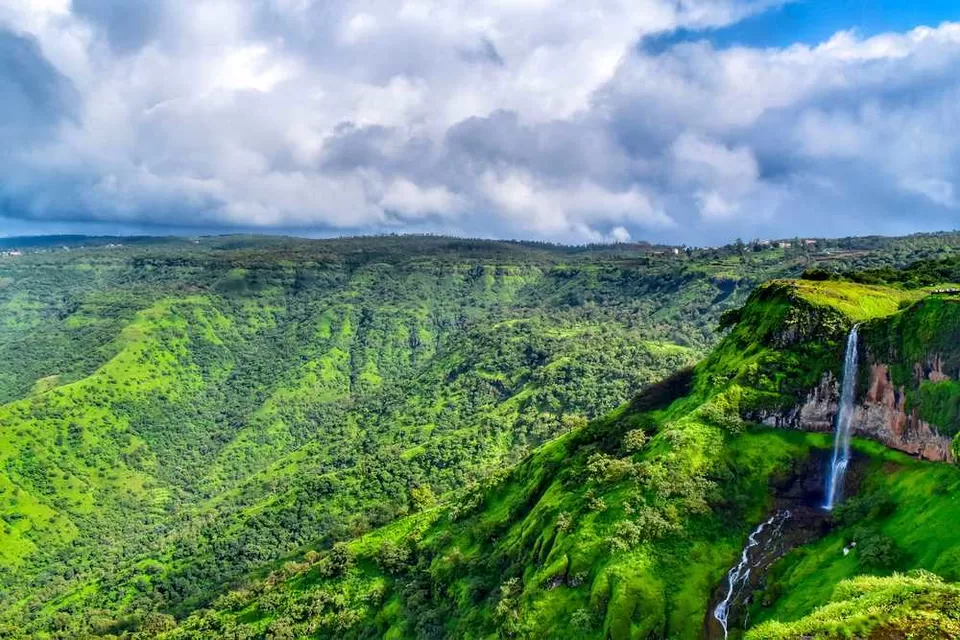Are you looking for a place to relax, meditate, and learn about the ancient wisdom of the Buddha? If yes, then you should visit the Global Vipassana Pagoda, a magnificent monument of peace and harmony located on Gorai Island in Mumbai, Maharashtra, India.
The pagoda is a tribute to the Buddha and his teachings, and offers a unique opportunity to experience the benefits of Vipassana meditation, a technique of self-transformation through self-observation. In this article, we will tell you everything you need to know about the Global Vipassana Pagoda, including its history, significance, architecture, attractions, activities, and more. Read on to discover why the pagoda is one of the seven wonders of Maharashtra, and how you can plan a memorable trip to this serene and spiritual destination.
History and Significance of the Pagoda
The Global Vipassana Pagoda was conceived and initiated by S. N. Goenka, a renowned teacher of Vipassana meditation, who wanted to create a symbol of gratitude and reverence to the Buddha and his teachings. The pagoda was also inspired by the Shwedagon Pagoda in Myanmar, which is considered to be the most sacred Buddhist site in the world.
The construction of the pagoda began in 2000 and was completed in 2008, with the help of thousands of volunteers and donors from around the world. The pagoda was inaugurated by the then President of India, Pratibha Patil, on February 8, 2009, in the presence of dignitaries and devotees from various countries.

The pagoda is not only a stunning structure, but also a place of great spiritual and cultural value. It serves as a center for the dissemination and preservation of the Buddha's teachings, especially the technique of Vipassana meditation, which was rediscovered and revived by Sayagyi U Ba Khin, the teacher of S. N. Goenka. The pagoda also houses the largest meditation hall in the world, which can accommodate up to 8,000 meditators at a time. Moreover, the pagoda enshrines the sacred relics of the Buddha, which are believed to have miraculous powers and blessings. The pagoda is also a symbol of harmony and unity among people of different religions, cultures, and backgrounds, as it welcomes everyone who wishes to learn and practice the universal teachings of the Buddha.
Architecture and Engineering of the Pagoda
The Global Vipassana Pagoda is a marvel of architecture and engineering, as it showcases the ancient and modern aspects of design and construction. The pagoda is built in the traditional Burmese style, with a circular base and a conical dome. The dome is made of interlocking stones, without any supporting pillars or beams, and is covered with gold paint. The dome has a height of 96.12 meters (315 feet) and a diameter of 97.46 meters (320 feet), making it the largest stone dome in the world. The dome is also designed to withstand earthquakes and strong winds, and has a lifespan of more than 2,000 years.

The pagoda complex consists of several buildings and facilities, such as the main entrance gate, the visitor center, the meditation hall, the relic chamber, the museum, the art gallery, the library, the cafeteria, the bookstore, the guest house, and the administrative office. The complex is spread over an area of 13 acres, and is surrounded by lush greenery and scenic views. The complex also has a solar power plant, a rainwater harvesting system, and a sewage treatment plant, making it an eco-friendly and self-sufficient project.
Meditation Dome Hall: The Largest in the World
The main attraction of the pagoda is the meditation dome hall, which is located inside the dome. The hall is the largest of its kind in the world, and can accommodate up to 8,000 meditators at a time. The hall is divided into two levels, with the upper level reserved for the old students of Vipassana, and the lower level for the new students and visitors. The hall is equipped with a sound system, a ventilation system, and a lighting system, to ensure the comfort and convenience of the meditators. The hall is also adorned with paintings and sculptures depicting the life and teachings of the Buddha.

The meditation dome hall is open to anyone who wants to experience the benefits of Vipassana meditation, which is a technique of self-transformation through self-observation. Vipassana means to see things as they really are, and to develop insight and wisdom by observing the reality within oneself. Vipassana meditation is taught and practiced at the pagoda in the same way as it was taught by the Buddha 2,500 years ago, and as it was preserved and transmitted by a lineage of teachers in India and Myanmar. The meditation courses at the pagoda are free of charge, and are conducted by the assistant teachers of S. N. Goenka, who guide the meditators through audio and video recordings of his instructions and discourses.
The meditation courses at the pagoda are of different types and durations, depending on the level and availability of the meditators. The most common and popular course is the 10-day course, which is an intensive and comprehensive course that covers the theory and practice of Vipassana meditation. The 10-day course is suitable for anyone who wants to learn the technique in a systematic and thorough manner, and who can commit to follow the code of discipline and the timetable of the course. The 10-day course is offered at the pagoda every month, and requires prior registration and confirmation.
For those who cannot attend the 10-day course, there are other options available, such as the one-day course, the three-day course, the children's course, and the executive course. The one-day course is a short and introductory course that gives a glimpse of the technique and its benefits. The one-day course is offered at the pagoda every Sunday, and does not require any registration or confirmation. The three-day course is a condensed and intermediate course that reviews and reinforces the technique and its practice. The three-day course is offered at the pagoda every quarter, and requires prior registration and confirmation.
The children's course is a special and fun course that teaches the basic principles and techniques of Vipassana meditation to children aged 8 to 15 years. The children's course is offered at the pagoda every month, and requires prior registration and confirmation. The executive course is a customized and flexible course that caters to the needs and preferences of the corporate and professional groups. The executive course is offered at the pagoda on request, and requires prior booking and confirmation.
To access the meditation dome hall, one has to take a ferry from the Gorai Jetty or the Essel World Jetty, which are located on the mainland. The ferry ride takes about 15 minutes, and costs Rs. 50 per person. The ferry service is available from 7:30 am to 5:30 pm, and the frequency is every 15 minutes.
The pagoda is open to visitors from 9:00 am to 6:30 pm, and the entry is free of charge. However, the visitors have to follow certain rules and etiquette while visiting the pagoda, such as maintaining silence, dressing modestly, removing shoes, and respecting the sanctity of the place.
Buddha Relics: A Rare and Sacred Treasure
Another attraction of the pagoda is the Buddha relics, which are the remains of the physical body of the Buddha after his cremation. The relics are considered to be very rare and sacred, as they are believed to have miraculous powers and blessings. The relics are also a source of inspiration and devotion for the followers of the Buddha, as they represent his presence and compassion. The relics are usually kept in a stupa or a pagoda, which is a dome-shaped structure that symbolizes the mind of the Buddha.

The Global Vipassana Pagoda enshrines the largest collection of the Buddha relics in the world, which were obtained from various sources and countries. The relics are kept in a special chamber inside the dome, which is accessible only to the old students of Vipassana, who have completed at least one 10-day course. The chamber is located on the upper level of the meditation hall, and is open from 11:00 am to 1:00 pm, and from 2:00 pm to 4:00 pm. The old students can enter the chamber and pay their respects to the relics, by bowing, offering flowers, or meditating. The chamber is also equipped with a display system, which shows the images and information of the relics.
The relics at the pagoda are of different types and sizes, ranging from grains of sand to pearls. The relics are also of different colors and shapes, such as white, pink, yellow, blue, green, red, and black, and round, oval, square, and triangular. The relics are classified into four categories, according to their origin and quality. The first category is the original relics, which are the actual remains of the Buddha's body, such as bones, teeth, and hair. The original relics are the most precious and rare, and are usually found in the ancient stupas and pagodas in India, Nepal, Sri Lanka, Myanmar, Thailand, and other countries. The second category is the transformed relics, which are the crystals or gems that are formed from the ashes or dust of the Buddha's body, due to the relics by the power of faith and devotion. The transformed relics are also very valuable and rare, and are usually found in the later stupas and pagodas in China, Japan, Korea, and other countries.
The third category is the replica relics, which are the copies or imitations of the original or transformed relics, made by the skilled artisans or devotees. The replica relics are also respected and revered, and are usually given as gifts or donations to the pagodas or temples. The fourth category is the honorary relics, which are the objects or materials that are associated with the Buddha or his disciples, such as robes, bowls, statues, scriptures, or flowers. The honorary relics are also considered to be auspicious and sacred, and are usually displayed or offered to the pagodas or temples.
The pagoda has a total of 10,848 relics, of which 10,000 are original relics, 108 are transformed relics, 108 are replica relics, and 632 are honorary relics. The most prominent and precious relic at the pagoda is the crystal relic, which is a large and beautiful crystal that contains the ashes of the Buddha. The crystal relic was donated by the Sri Lankan government in 1956, and was enshrined at the pagoda in 2006. The crystal relic is kept in a golden casket, which is placed on a lotus-shaped pedestal, inside a glass enclosure. The crystal relic is visible from all sides, and emits a radiant and peaceful light. The crystal relic is also the largest relic in the world, and is estimated to be worth more than Rs. 100 crore.
Seven Wonders of Maharashtra: A Tourist Guide
The Global Vipassana Pagoda is not only a spiritual destination, but also a tourist attraction, as it is one of the seven wonders of Maharashtra. The seven wonders of Maharashtra are the most remarkable and popular landmarks in the state, that showcase its rich and diverse culture, heritage, and nature. The seven wonders of Maharashtra are:

Ajanta and Ellora Caves:
These are the ancient rock-cut caves that depict the Buddhist, Hindu, and Jain art and architecture. The caves are located near the city of Aurangabad, and are recognized as UNESCO World Heritage Sites. The caves are famous for their exquisite paintings, sculptures, and carvings, that illustrate the stories and teachings of the religions. The caves are also known for their engineering marvels, such as the Kailasa Temple, which is the largest monolithic structure in the world.

Elephanta Caves:
These are the medieval rock-cut caves that are dedicated to the Hindu god Shiva. The caves are located on an island near the city of Mumbai, and are accessible by ferry. The caves are famous for their majestic statues, pillars, and panels, that depict the various forms and aspects of Shiva. The caves are also known for their masterpiece, the Trimurti, which is a three-headed sculpture of Shiva, representing his creator, preserver, and destroyer roles.

Gateway of India:
This is the iconic arch-shaped monument that was built to commemorate the visit of King George V and Queen Mary to India in 1911. The monument is located on the waterfront of the city of Mumbai, and is a symbol of the colonial and modern history of the city. The monument is famous for its Indo-Saracenic style, which combines the elements of Hindu, Islamic, and European architecture. The monument is also known for its scenic views of the Arabian Sea, the Taj Mahal Hotel, and the boats and ferries.
Mahabaleshwar:
This is the hill station and the summer capital of the state, that is known for its pleasant climate, lush greenery, and scenic beauty. The hill station is located in the Western Ghats, and is a popular destination for nature lovers, adventure seekers, and honeymooners. The hill station is famous for its strawberry farms, waterfalls, lakes, viewpoints, and temples. The hill station is also known for its highest peak, the Wilson Point, which offers a panoramic view of the sunrise and sunset.

Lonar Lake:
This is the saline and alkaline lake that was formed by a meteor impact. The lake is located in the Buldhana district, and is a unique and rare geological phenomenon. The lake is famous for its circular shape, blue-green color, and high pH level. The lake is also known for its flora and fauna, such as algae, bacteria, birds, and fish, that have adapted to the extreme conditions of the lake. The lake is also surrounded by ancient temples, caves, and forts, that add to its historical and cultural significance.

Raigad Fort:
This is the hill fort and the capital of the Maratha Empire, that was built by the legendary king Shivaji. The fort is located in the Raigad district, and is a symbol of the bravery and glory of the Marathas. The fort is famous for its strategic location, fortifications, and monuments, such as the throne, the palace, the tombs, and the temples. The fort is also known for its ropeway, which is the easiest and fastest way to reach the fort.

Global Vipassana Pagoda:
This is the monument of peace and harmony, that is dedicated to the Buddha and his teachings. The pagoda is located on Gorai Island, near the city of Mumbai, and is accessible by ferry. The pagoda is famous for its largest stone dome, its largest meditation hall, and its largest collection of Buddha relics. The pagoda is also known for its Vipassana meditation courses, which are free of charge and open to all.
These are the seven wonders of Maharashtra, that you should not miss when you visit the state. These wonders will not only amaze you with their beauty and grandeur, but also enrich you with their history and culture. You can plan and enjoy a trip to these wonders, by booking a package or a tour, or by hiring a car or a taxi. You can also find various accommodation options, such as hotels, resorts, homestays, and camps, near these wonders.
You can also explore the other attractions and experiences in and around these wonders, such as the local cuisine, the festivals, the markets, and the adventure activities.
We hope you enjoyed reading this article, and learned more about the Global Vipassana Pagoda, and the other wonders of Maharashtra. We invite you to visit the pagoda, and experience its beauty and peace, and to learn and practice the technique of Vipassana meditation, which can transform your life and happiness.
We also encourage you to visit the other wonders of Maharashtra, and discover the diversity and richness of the state.
















































